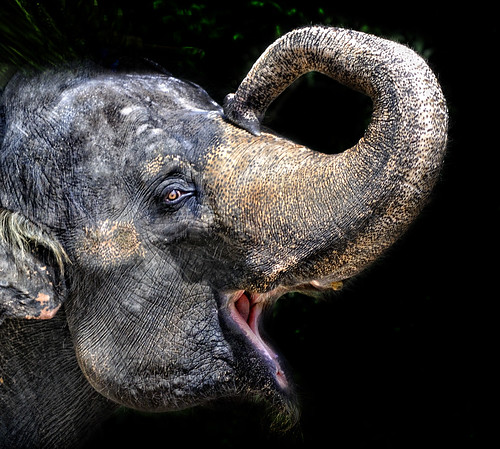
Elephant at the Singapore Zoo;
(Photo by i359702)
Today (12th August) is the inaugural World Elephant Day, a day for the world to learn about and act on solutions to the urgent plight of Asian and African elephants. Many of us know that the Asian elephant (Elephas maximus) can still be found in many countries in tropical Asia, including Malaysia, Indonesia, and Thailand. However, did you know that there are relatively recent records of elephants in Singapore, albeit from our larger offshore islands?
Pulau Tekong, 1990
In May 1990, 3 young bull elephants were spotted on Pulau Tekong. These supposedly belonged to a herd that lived on the eastern bank of the Johor River, near Pengerang.
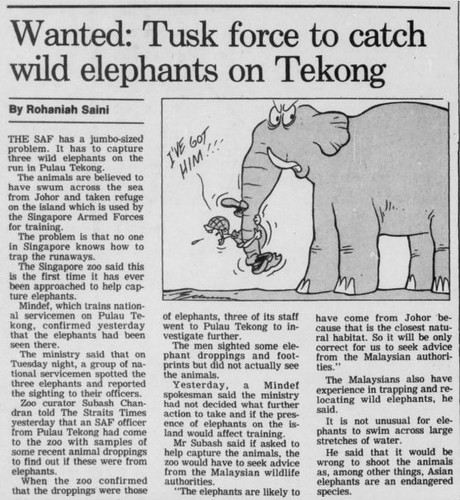
(The Straits Times, 31st May 1990)
As it did not have prior experience in handling wild elephants, Singapore requested for assistance from the Malaysian authorities.
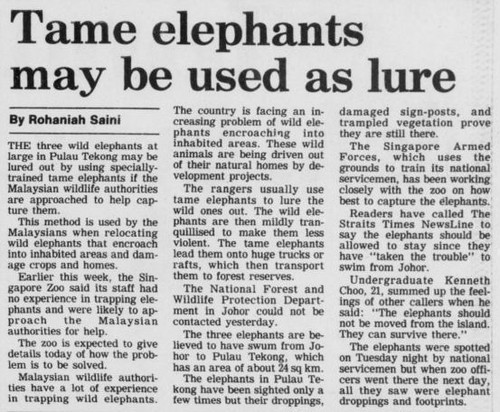
(The Straits Times, 2nd June 1990)
There were some who argued that the elephants should be allowed to remain on Pulau Tekong, but the official stance by the Singapore Zoo was that for the safety of both the elephants and the people on the island, it was best that the elephants were repatriated to Malaysia.

(The Straits Times, 2nd June 1990)

(The Straits Times, 3rd June 1990)
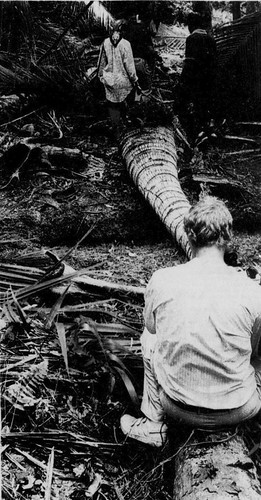
A coconut tree that was apparently felled by the elephants on Pulau Tekong;


(The Straits Times, 7th June 1990)
The 3 young bulls were eventually tracked down and tranquilised. Accompanied by 2 trained female elephants, which were part of the Malaysian Wildlife Department's Elephant Capture and Translocation Unit, the bulls were sent back to Malaysia and relocated to the forests of Endau Rompin National Park, on the Johor-Pahang border. Their fates are unknown, although given that elephants have long lifespans, I hope that they're still out there somewhere.

(The Straits Times, 8th June 1990)

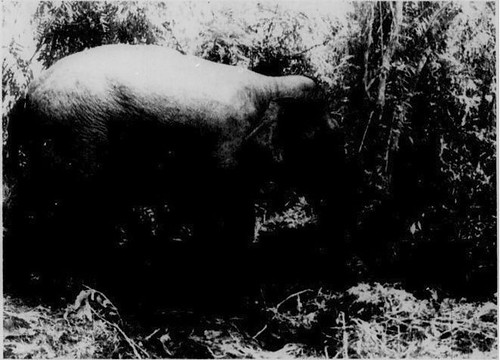


(The Straits Times, 9th June 1990)
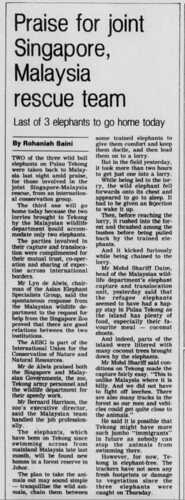
(The Straits Times, 10th June 1990)
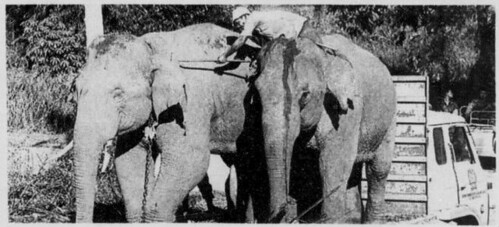
Here is one of the young bulls (on the left, identified by the tusks), with a tame female, being loaded onto a truck for the journey back to Malaysia.
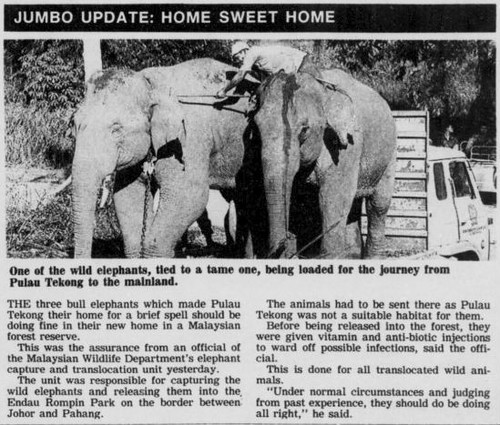

(The Straits Times, 18th June 1990)
Pulau Ubin, 1991
In March 1991, yet another elephant made the crossing, and landed in Pulau Ubin. This was also a young bull, which supposedly originated from a herd living on the western bank of the Johor River.

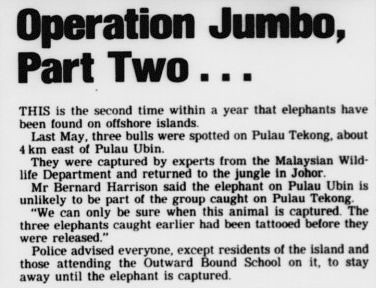
(The Straits Times, 3rd March 1991)
This individual caused quite a bit of havoc; it injured a resident on Pulau Ubin, chased 2 visitors, and damaged a taxi. Fortunately, no one was seriously injured in these incidents.

(The Straits Times, 2nd March 1991)
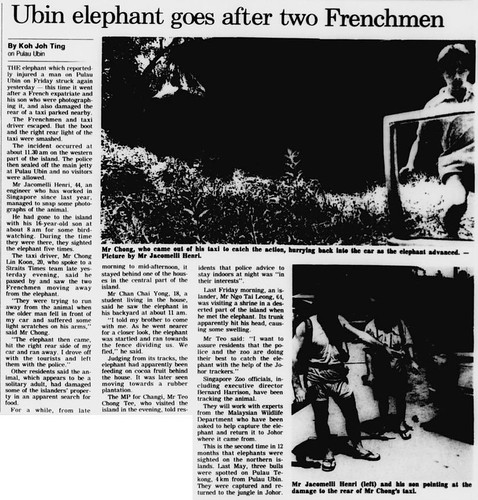
(The Straits Times, 4th March 1991)


(The Straits Times, 5th March 1991)
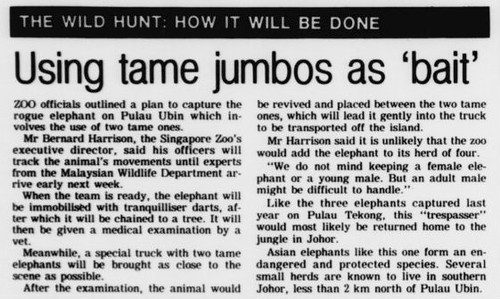
(The Straits Times, 3rd March 1991)
Like the others before it, this bull was eventually found and sedated.
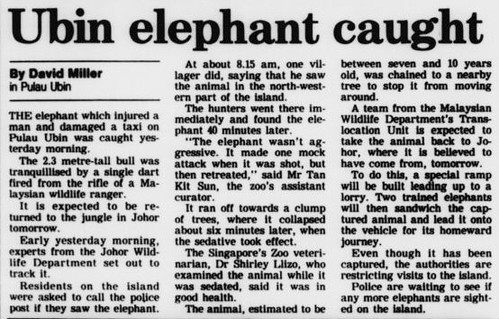
(The Straits Times, 7th March 1991)
Accompanied by the same 2 trained females involved in the capture of the Tekong trio, Cek Mek and Mek Bunga, it was loaded onto a truck, sent back to Malaysia, and relocated to Endau Rompin.

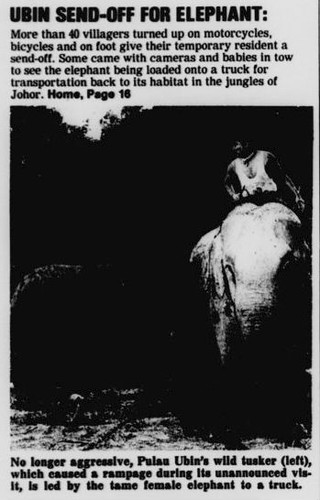
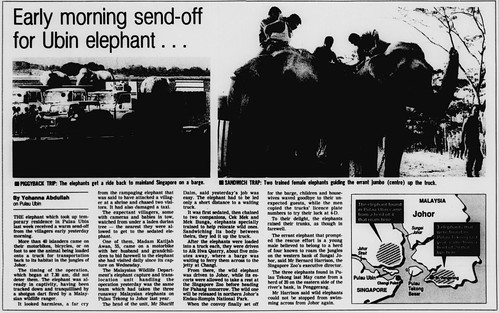
(The Straits Times, 10th March 1991)
Besides these few sightings, I have not been able to find out if there have been other records of wild elephants in Singapore. I won't be surprised if the forests of mainland Singapore did previously support herds of elephants in the past. Today, however, the only elephants in Singapore are found at the Singapore Zoo and Night Safari.
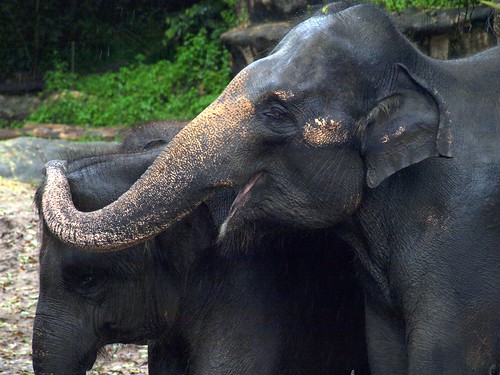
Elephants at the Singapore Zoo's Elephants of Asia exhibit;
(Photo by suey_j)

Chawang, the Night Safari bull;
(Photo by Lioneldude Photography)
Imperiled and Exploited

Reconstruction of woolly mammoth (Mammuthus primigenius), Royal BC Museum;
(Photo by Bjornert)
Elephants were once much more widespread and diverse, and in the late Pleistocene and early Holocene, at the end of the last ice age, many more species roamed across Eurasia, Africa, and the Americas, from the chilly grasslands of the northern continents so evocatively known as the mammoth steppe, to the foothills of the Andes, and all habitats in between. We know them by names like mammoth, mastodon, stegodont, and gomphothere, and modern humans once lived alongside, and most definitely hunted them, but these giants have all since vanished. Whether climate change, human hunting, or a deadly combination of both contributed to their disappearance, there is no denying that this wave of extinctions left the Proboscidea a pale shadow of its former self in terms of global distribution and diversity of species.
And the decline continues; elephants today are facing a crisis. All 3 extant species of elephants are experiencing a resurgence in poaching and ivory smuggling, and combined with continued habitat loss and conflict as elephants and humans cross paths with deadly consequences, populations are continuing to decline.
Singapore is not a consumer of elephant ivory, but it is an important transit point in international smuggling networks, where ivory from Africa are shipped to other parts of Asia. In July 2002, Singapore seized a container en route from Malawi to Japan that contained 532 elephant tusks and over 40,000 blank ivory hankos (traditional Japanese name seals), a total of 6.2 tonnes of ivory. This represented around 600 elephants slaughtered in Zambia and Malawi, and still holds the record of being one of the largest shipments of elephant ivory since the 1989 trade ban. Further details are provided in Back in Business: Elephant Poaching and the Ivory Black Markets of Asia, and reveal Singapore's role in the ivory smuggling business. One wonders whether surveillance and enforcement here to root out the companies involved in the trade have been stepped up since then.

Part of the shipment confiscated in Singapore;
(Photo by Environmental Investigation Agency)
Last July, part of this haul, which had been sent to Kenya for further investigation and stockpiling, was set on fire and destroyed.


President of Kenya Mwai Kibaki setting fire to the illegal ivory stockpile;
(Photos by Tony Karumba / AFP – Getty Images)
Unfortunately, nobody, apart from the Singaporean transhipment agent who received a US$3000 fine, was ever prosecuted, let alone convicted. This disappointing conclusion was detailed in The Enforcement Imperative: Combating the Illegal Trade in Ivory.
In Singapore the authorities failed to conduct a thorough investigation of the case. Although the shipping bill for the container stated the consignee as the Singapore-based company Delight Harvest, the authorities accepted the explanation from company executives that the name had been used without their knowledge. Basic analysis of Singapore's register of company information would have revealed that one of the directors had been a founding member of an ivory carving business in Singapore in 1988. Furthermore, while the agent involved in arranging the onward shipment of the container escaped with only a small fine, scrutiny of shipping and business records would have shown his involvement in a company that had received six previous shipments from the syndicate's operatives in Malawi.
In December 2010, 2 Singaporeans, suspected of attempting to smuggle ivory to Thailand, were arrested in Kenya.
If we don't somehow find a way to put an end to the slaughter and decimation of these magnificent and intelligent beasts, we may be seeing the elimination of elephants from much of their range, with untold implications for local ecosystems and countless other species that have evolved to rely on these keystone species.
Not that elephants in captivity necessarily lead better lives; there are many allegations regarding elephants languishing in zoos and circuses ill-equipped to provide them with the space and mental enrichment needed for such large and intelligent creatures, or the opportunity to form long-term bonds with one another as they do in the wild. Meanwhile, in many Asian countries, tourists who visit elephant "camps" to get up close with tame elephants often unknowingly support their continued exploitation and the capture of young elephants from the wild. These end up enduring abuse and torture, their spirits broken to render them tractable. There are claims that many elephants, both in the wild and captivity, are showing signs of suffering from Post Traumatic Stress Disorder, triggered by stress as a result of the breakdown of familial ties due to poaching and conflict with humans, or abuse and neglect under captive conditions.
As the World Elephant Day site states,
"World Elephant Day asks you to experience elephants in non-exploitive and sustainable environments where elephants can thrive under care and protection. On World Elephant Day August 12, express your concern, share your knowledge and support solutions for the better care of captive and wild elephants alike."
In an increasingly crowded world, may there always be enough room for these majestic giants, and may they continue to be a force of nature unto themselves.